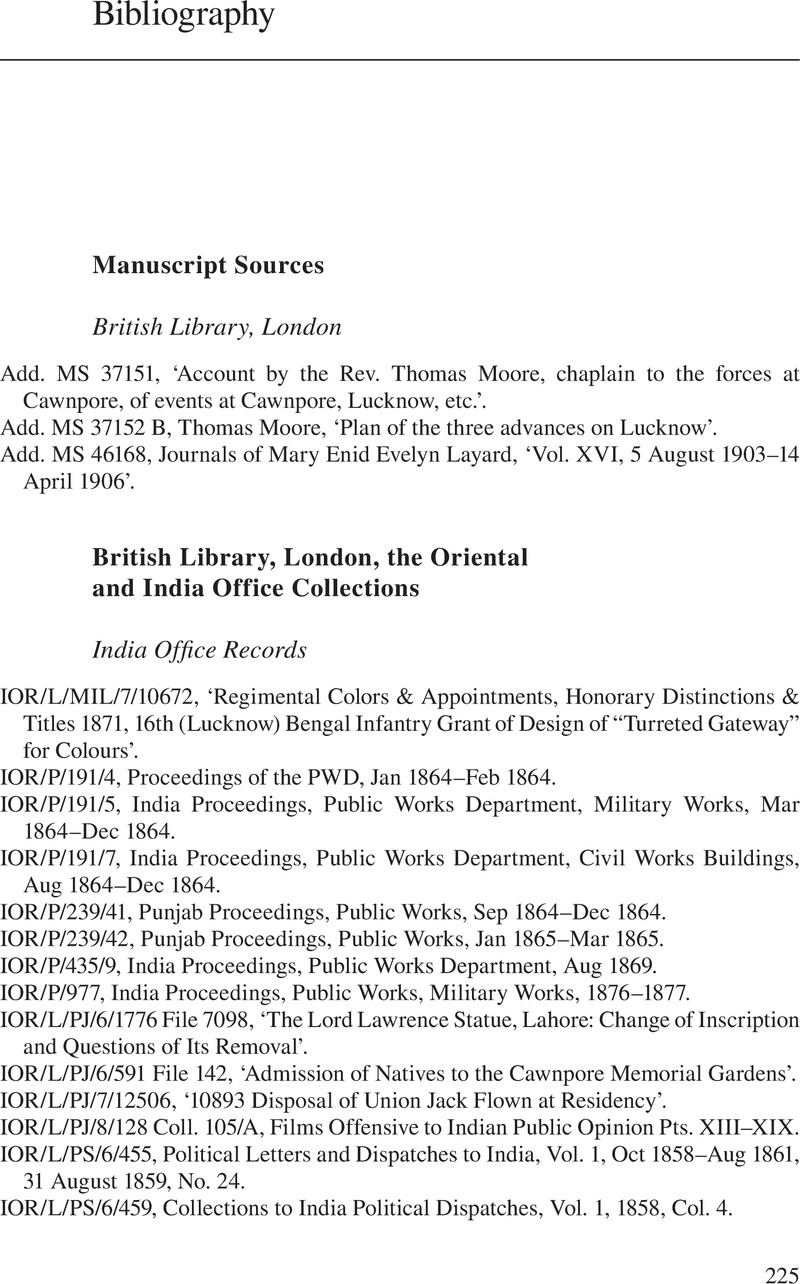Book contents
- The 1857 Indian Uprising and the Politics of Commemoration
- The 1857 Indian Uprising and the Politics of Commemoration
- Copyright page
- Dedication
- Contents
- Figures
- Acknowledgements
- Abbreviations
- Introduction
- 1 ‘Remember Cawnpore!’
- 2 ‘Forget Cawnpore!’
- 3 Negotiating Fear
- 4 The Mutiny of 1907
- 5 The War of Indian Independence
- 6 Remembering the Mutiny at the End of Empire: 1947–1972
- 7 Celebrating the First War of Independence Today
- Conclusion
- Bibliography
- Index
- References
Bibliography
Published online by Cambridge University Press: 21 April 2022
- The 1857 Indian Uprising and the Politics of Commemoration
- The 1857 Indian Uprising and the Politics of Commemoration
- Copyright page
- Dedication
- Contents
- Figures
- Acknowledgements
- Abbreviations
- Introduction
- 1 ‘Remember Cawnpore!’
- 2 ‘Forget Cawnpore!’
- 3 Negotiating Fear
- 4 The Mutiny of 1907
- 5 The War of Indian Independence
- 6 Remembering the Mutiny at the End of Empire: 1947–1972
- 7 Celebrating the First War of Independence Today
- Conclusion
- Bibliography
- Index
- References
Summary

- Type
- Chapter
- Information
- The 1857 Indian Uprising and the Politics of Commemoration , pp. 225 - 250Publisher: Cambridge University PressPrint publication year: 2022

